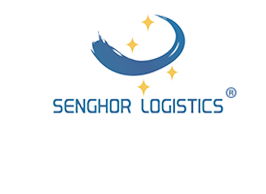What is MSDS in international shipping?
One document that frequently surfaces in cross-border shipments—particularly for chemicals, hazardous materials, or products with regulated components—is the "Material Safety Data Sheet (MSDS)", also known as a "Safety Data Sheet (SDS)". For importers, freight forwarders, and related manufacturers, understanding the MSDS is critical to ensuring smooth customs clearance, safe transportation, and legal compliance.
What is an MSDS/SDS?
A “Material Safety Data Sheet (MSDS)” is a standardized document that provides detailed information about the properties, hazards, handling, storage, and emergency measures related to a chemical substance or product, which is designed to inform users of the potential risks of exposure to chemicals and guide them in implementing appropriate safety measures.
An MSDS typically includes 16 sections covering:
1. Product identification
2. Hazard classification
3. Composition/ingredients
4. First-aid measures
5. Firefighting procedures
6. Accidental release measures
7. Handling and storage guidelines
8. Exposure controls/personal protection
9. Physical and chemical properties
10. Stability and reactivity
11. Toxicological information
12. Ecological impact
13. Disposal considerations
14. Transport requirements
15. Regulatory information
16. Revision dates
Key functions of an MSDS in international logistics
The MSDS serves multiple stakeholders in the supply chain, from manufacturers to end-users. Below are its primary functions:
1. Regulatory Compliance
International shipments of chemicals or hazardous goods are subject to strict regulations, such as:
- IMDG Code (International Maritime Dangerous Goods Code) for sea freight.
- IATA Dangerous Goods Regulations for air transport.
- ADR Agreement for European road transport.
- Country-specific laws (e.g., OSHA Hazard Communication Standard in the U.S., REACH in the EU).
An MSDS provides the data needed to classify goods correctly, label them, and declare them to authorities. Without a compliant MSDS, shipments risk delays, fines, or rejection at ports.
2. Safety and Risk Management (Just for a general understanding)
The MSDS educates handlers, transporters, and end-users about:
- Physical hazards: Flammability, explosiveness, or reactivity.
- Health hazards: Toxicity, carcinogenicity, or respiratory risks.
- Environmental risks: Water pollution or soil contamination.
This information ensures safe packaging, storage, and handling during transit. For example, a corrosive chemical might require specialized containers, while flammable goods may need temperature-controlled transport.
3. Emergency Preparedness
In case of spills, leaks, or exposure, the MSDS provides step-by-step protocols for containment, cleanup, and medical response. Customs officials or emergency crews rely on this document to mitigate risks swiftly.
4. Customs Clearance
Customs authorities in many countries mandate the submission of an MSDS for hazardous goods. The document verifies that the product meets local safety standards and helps assess import duties or restrictions.
How to obtain MSDS?
MSDS is usually provided by the manufacturer or supplier of the substance or mixture. In the shipping industry, the shipper needs to provide the carrier with MSDS so that the carrier can understand the potential risks of the goods and take appropriate precautions.
How is an MSDS used in international shipping?
For global stakeholders, the MSDS is actionable at multiple stages:
1. Pre-Shipment Preparation
- Product Classification: The MSDS helps determine if a product is classified as "dangerous" under transport regulations (e.g., UN numbers for hazardous materials).
- Packaging and Labeling: The document specifies requirements such as “Corrosive” labels or “Keep Away from Heat” warnings.
- Documentation: Forwarders include the MSDS in shipping paperwork, such as the “Bill of Lading” or “Air Waybill”.
Among the products that Senghor Logistics often ships from China, cosmetics or beauty products are one type that requires MSDS. We must ask the customer's supplier to provide us with relevant documents such as MSDS and Certification for Safe Transport of Chemical Goods for review to ensure that the transportation documents are complete and shipped smoothly. (Check the service story)
2. Carrier and Mode Selection
Transporters use the MSDS to decide:
- Whether a product can be shipped via air freight, sea freight, or land freight.
- Special permits or vehicle requirements (e.g., ventilation for toxic fumes).
3. Customs and Border Clearance
Importers must submit the MSDS to customs brokers to:
- Justify tariff codes (HS codes).
- Prove compliance with local regulations (e.g., U.S. EPA Toxic Substances Control Act).
- Avoid penalties for misdeclaration.
4. End-User Communication
Downstream clients, such as factories or retailers, rely on the MSDS to train staff, implement safety protocols, and comply with workplace laws.
Best practices for importers
Work with experienced and professional freight forwarders to ensure that the documents coordinated with the supplier are correct and complete.
As a freight forwarder, Senghor Logistics has more than 10 years of experience. We have always been appreciated by customers for our professional ability in special cargo transportation, and escorts customers for smooth and safe shipment. Welcome to consult us anytime!
Post time: Feb-21-2025















